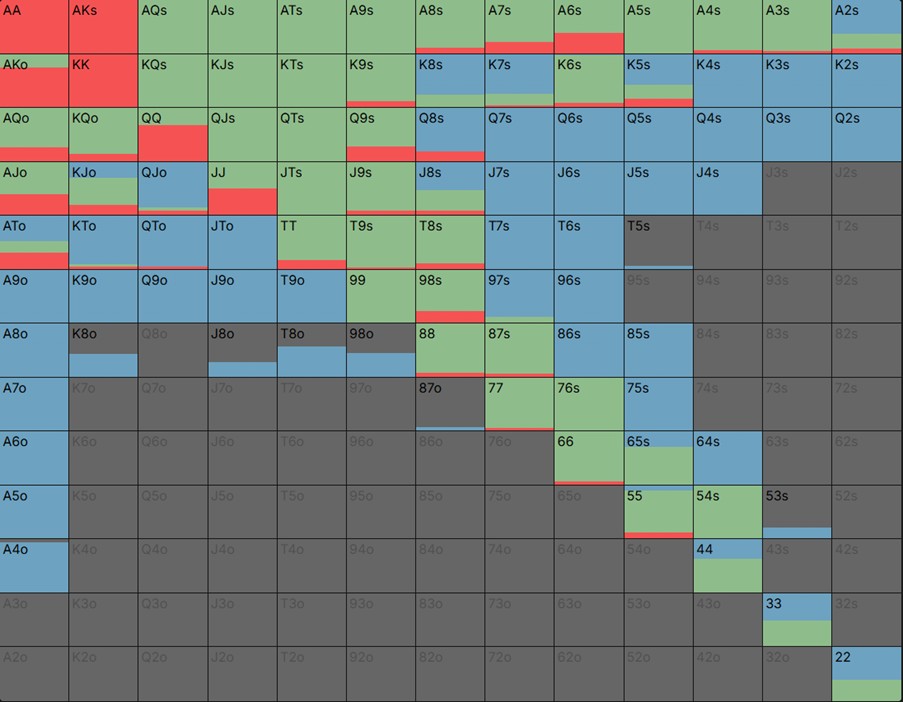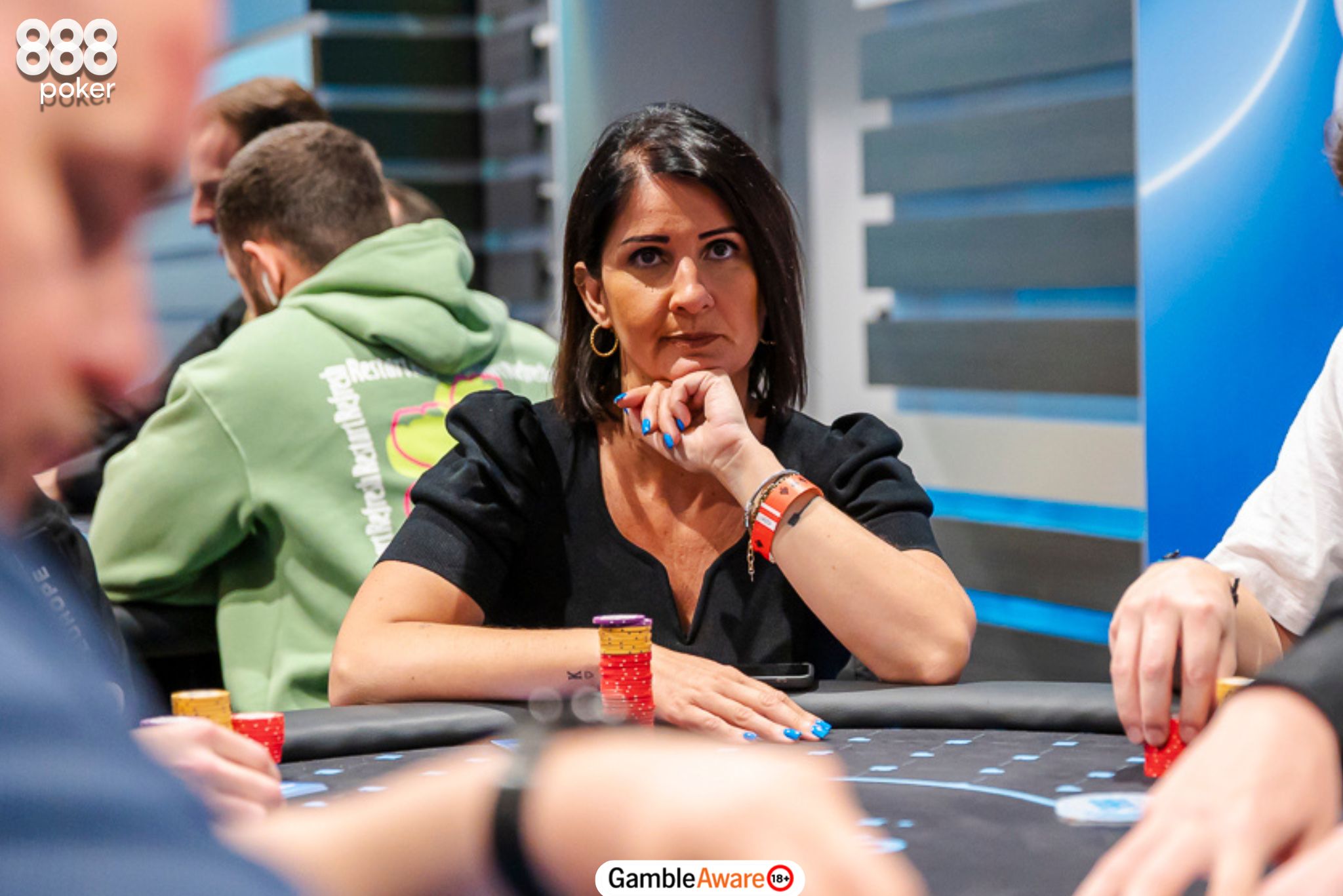A common point of difficulty for many poker players is defending the BTN against a 3bet from the blinds.
Since we are likely raising the button with a wide range, we’ll need to defend some speculative holdings if we want to avoid folding too frequently.
Let’s consider what a theoretically correct defending range looks like, and which types of adjustments might be on the cards in practice.
BTN 2.5x vs 11bb BB 3bet
Let’s imagine we open raise the BTN to 2.5bb and face an 11bb 3bet in a Texas Hold’em game.
How are we supposed to respond?
It's good to start by acknowledging that it is still correct to fold most of the time when facing a 3bet of this size from the BTN.
Our defence frequencies should look something like the following –
- Fold ~54.6%
- Call ~33.9%
- 4bet ~11.5%
The hands that we want to generally avoid folding are as follows –
- 66+
- Suited Aces
- AJo+, KQ
- Suited broadways
- Suited connectors
- The best suited gappers (e.g. T8s and J9s)
- Suited 9x (e.g. K9s, J9s)
We also defend a selection of slightly weaker hands, but those same hands are mixed into the folding range.
Their expected value is zero either way, so they primarily exist for balance purposes.

Conversely, hands that should mostly be folded –
- A9o and weaker.
- KTo, QJo and weaker
- Suited Qx that are not at least Q9s
- Most Kxs below K9s
- Suited gappers (apart from T8s and J9s)
Adjusting to 3bet Sizing
As a simple heuristic, GTO poker dictates that the smaller the 3bet sizing, the wider we should defend.
In addition, since most regulars now 3bet the blind with a 10-13bb sizing, we can generally assume that blind 3bets with a sizing of 8bb or less are from recreational players.
We should defend all but the worst of holdings in such circumstances, since our winrate will always be higher against weak opponents.
Adjusting Based on SB/BB
It's worth noting that the average regular will tend to 3bet on the aggressive side from the SB but on the passive side from the BB.
This scenario makes 4betting against SB 3bets more attractive than 4betting against BB 3bets.
When facing a BB 3bet, we can assume most opponents are on the tighter side (relative to theory) and lacking an appropriate number of semi-bluffs.

Adjusting Based on Tendencies
As is frequently the case in poker, our best response will depend on our opponent more than the actual poker hand:
If our opponent rarely 3bets –
We can mostly cut out the 4bet semi-bluff range (unless our opponent still folds a lot to 4bets) and even fold some of the hands that a solver would call the 3bet with.
If our opponent 3bets very aggressively –
We can defend more frequently, both by 4betting and by flatting. Against especially aggressive opponents, we can alleviate some of the pressure by slightly tightening our initial RFI strategy.
If our opponent folds a lot to 4bets –
If our opponent folds more than 50% of the time to 4bets, we can increase the frequency of our 4bet semi-bluffs. We can also widen the range to include some weaker holdings.
If our opponent rarely folds to 4bets –
This scenario doesn’t always mean that we can’t 4bet aggressively (because we still have postflop play), but we’ll usually be looking to avoid our most speculative 4bet semi-bluffs vs non-folders.
If you're struggling getting 3bet by the BB when you raise in the SB, get some helpful strategy tips here.


